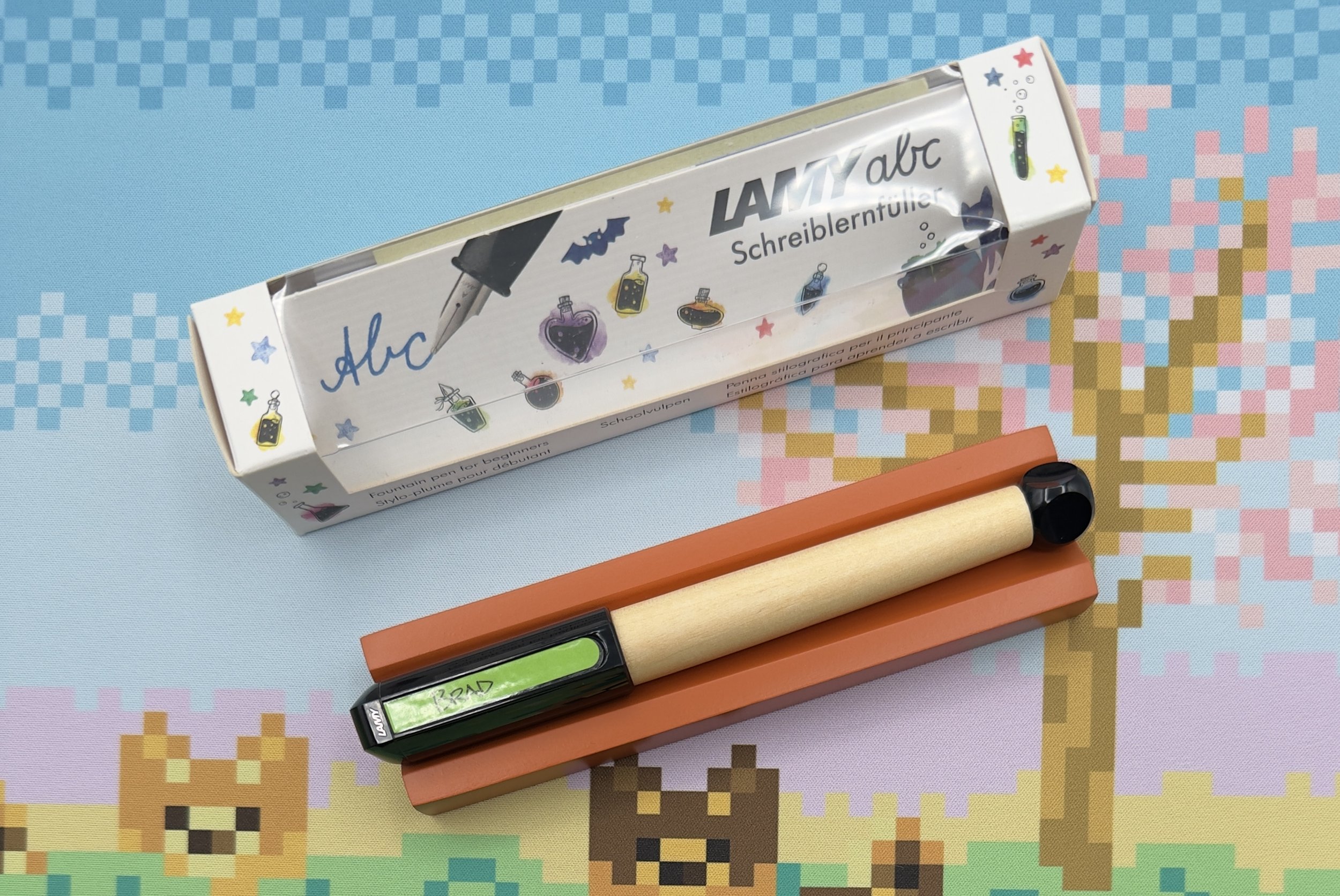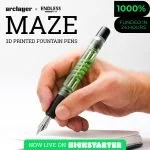The Kolo Tino has been making the rounds on the Stationery Internet™, and yes, I received one too. I’ve had mine in use for the past week, and I’ll say this: it makes for a perfect review product because I have a lot to say about it. Let’s dig in!
The Kolo Tino is designed by Tino Valentinitsch, an industrial designer from Vienna, Austria, in collaboration with Peter Dunn, founder of Kolo. As a brand, Kolo began in 1998, and was acquired by Topdrawer in 2016. Topdrawer is a subsidiary of Itoya, Japan, and has several brick and mortar retail locations around the world. For our purposes, Topdrawer is the distributor of the Kolo lineup, which is why you see the brand being carried by several retailers in our space.
That patina doing work.
The Kolo Tino Brass Fountain Pen is a stunner to look at. This model is small and sleek, featuring a triangular shaped barrel with rounded ridges. The barrel tapers into a torpedo shape on the front, and has aluminum extension on the back for posting the cap. Aesthetically, it looks spectacular, although I do wonder about the left-handed orientation of the stamped Kolo wordmark. If the designer is left-handed and just went for it that would be awesome!
I stopped mid-writing to take a few pics of my grip, and where it hits on the barrel step.
Once uncapped, the Kolo Tino runs into some challenges. The triangular barrel design gives way to a cylindrical, tapered grip section. This leaves quite a drop from the barrel to the section - more on the ridges, less on the flat sides. A traditional writing grip will find its way up the flat sides, but not without some challenge finding comfort in the step down to the grip. The barrel edge in that area is chamfered so it’s not cutting into your hands, but it is still Brass, and noticeable. Non-traditional grips could have more of a challenge in this area.
For me, the only way to grip the pen is to have some part of my fingers over that step down. I could grip lower, but that puts me too close to the nib. I could go higher, above the step, but that puts me too far away.
I could have some #DealWithIt grace in this area of the pen if it was usable unposted. For me, and my very average sized hands, it’s not. The Kolo Tino is too short to clear the cusp of my hand between my thumb and forefinger, making it awkward to write with for more than a short note.
Too short to use uncapped.
When posted, the Brass cap attached to the Brass barrel makes the pen too heavy, and too unbalanced. I also don’t care for the aesthetic of the posting connection, but that’s just a me thing. I’d prefer a more seamless posting.
Better posted, but now unbalanced.
Given the weight of the Brass pen - which checks in at 69 grams - this was always a possibility. That’s why I’m interested in how both the Acrylic and full Aluminum barrels feel in hand. The lighter weight of those models (21g and 27g, respectively,) could make the grip section more passable, and less of an interference.
Comparison (L to R): Kaweco Steel Sport, Kolo Tino Brass, Sailor Pro Gear Mini.
The Kolo Tino is fitted with a Schmidt #5 Steel nib, and uses Short International cartridges, and compatible converters. My Medium nib was perfect out of the box, and nice to use, especially with my selection of Graf von Faber-Castell Viper Green. I nailed the color, I must say.
Priced at $150 for Brass, Aluminum, and Standard Acrylic barrels ($195 for Specialty Acrylic,) the Kolo Tino provides nice value for what it offers. The material and construction are top notch, but that said, will you be able to use it given its extreme grip section? For me, the Brass model is too much of an ask to use over comparable pens. At a minimum, I’d be looking to try before buying to see how it will works for you.
I’ll be doing the same once I can test out an Acrylic barrel, which I hope to in the next couple of months. I think that would be worth a bit of a follow-up to this post and see how it compares. The design of the Kolo Tino interesting enough to see if they iterate on it and make it more of a universal user, instead of a specific fit.
(Topdrawer sent me this pen at no charge for purposes of this review.)
Enjoy reading The Pen Addict? Then consider becoming a member to receive additional weekly content, giveaways, and discounts in The Pen Addict shop. Plus, you support me and the site directly, for which I am very grateful.
Membership starts at just $5/month, with a discounted annual option available. To find out more about membership click here and join us!
































